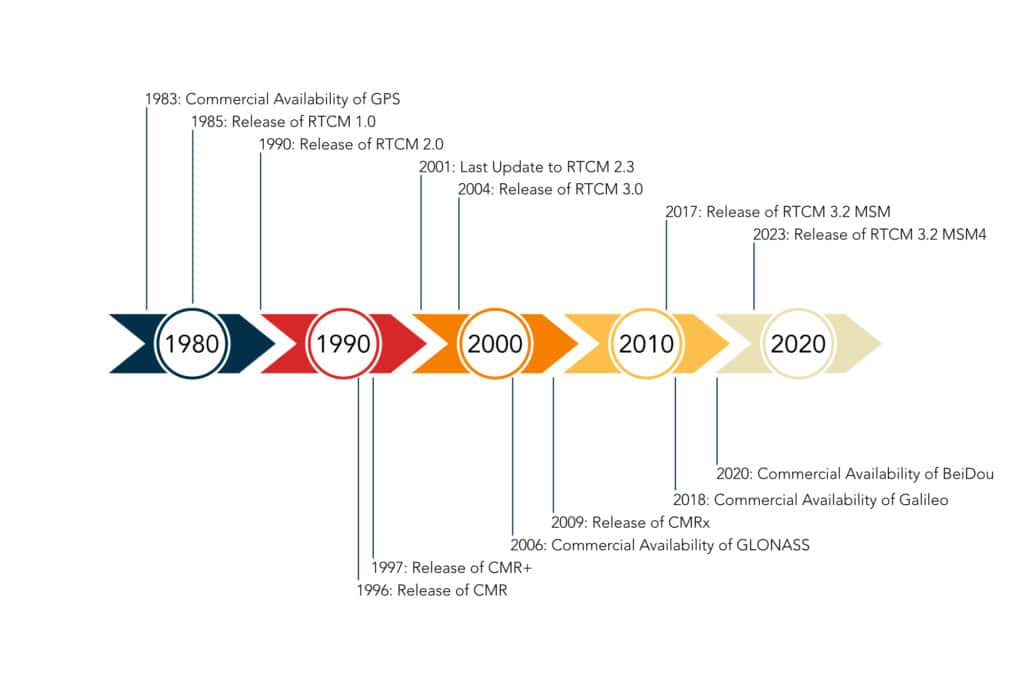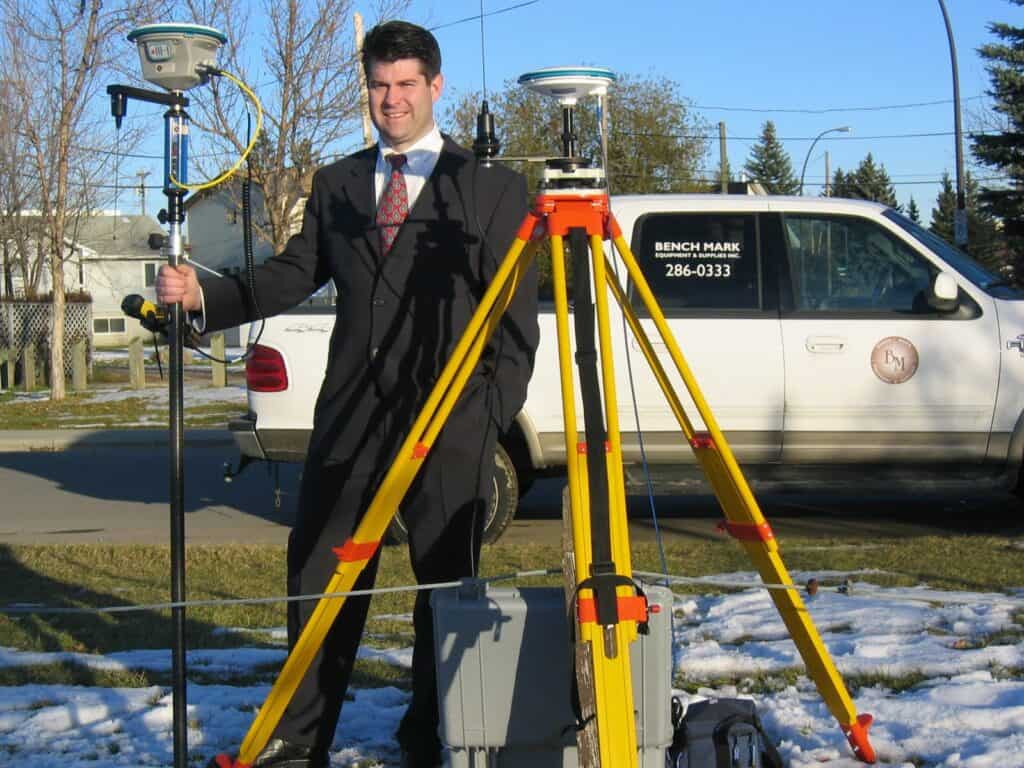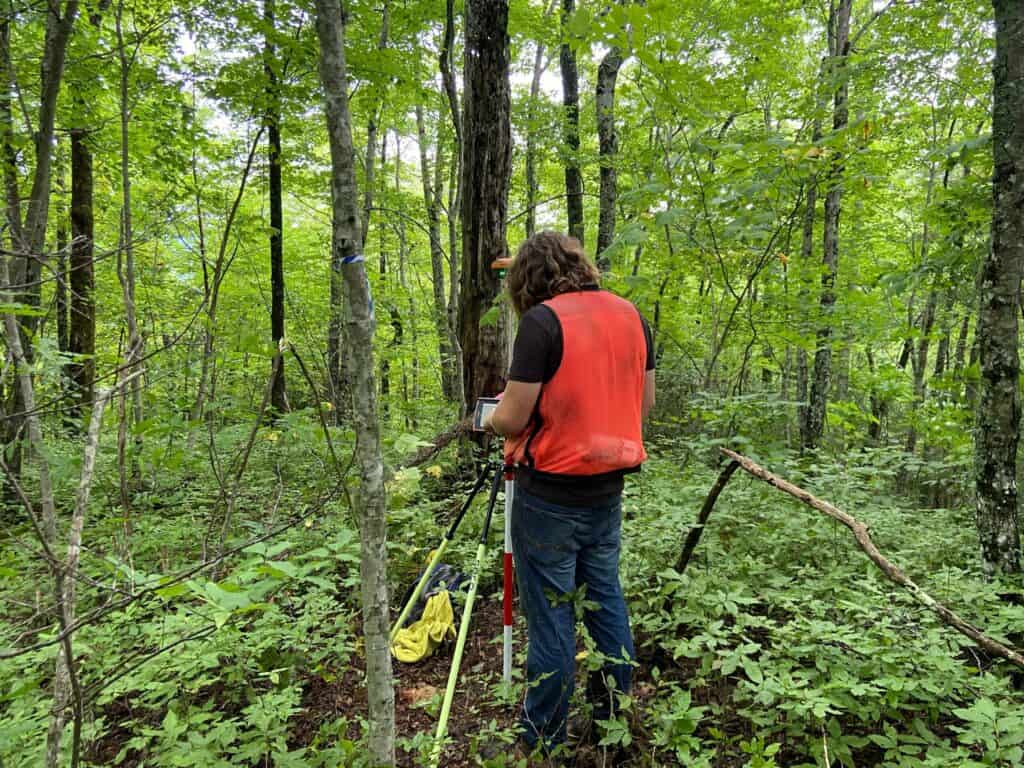
In the world of precision positioning, Real-Time Kinematic (RTK) technology has become indispensable for professionals in surveying, agriculture, construction, and geospatial fields. RTK offers centimeter-level accuracy by using correction data transmitted from a base station to a rover. But for this system to work, both sides must speak the same “language.” This is where message types—like RTCM and CMR—come into play.
In this article, we’ll break down what these message types are, how they work, why they matter, and why it’s essential to keep up with the latest standards if you want reliable, accurate, and future-proof RTK performance.

A Quick History of RTK Message Types
Why Do RTK Message Types Matter?
Why You Should Use the Latest RTCM Version
Practical Advice for Survey Businesses
Think of RTK message types like file formats or spoken languages. If one device speaks English and the other only understands French, communication breaks down. In RTK, this “language” is the format in which correction data is transmitted from the base station to the rover.
RTK correction messages carry data such as satellite positions, pseudorange measurements, phase observations, and satellite health status. These are critical to enable the rover to refine its own satellite data and achieve centimeter-level positioning.
The format or protocol in which this correction data is packaged is referred to as a message type. If the base and rover support different message types, they won’t be able to interpret each other’s signals.

The Early Days: Proprietary Protocols
When GPS technology became commercially viable in the 1980s and early 1990s, manufacturers like Trimble, Leica, and John Deere each created their own proprietary message formats. This was great for internal product ecosystems but terrible for interoperability. If your rover was made by one company, it wouldn’t work with a base station from another, or work as a rover with a different base station.This fragmentation limited flexibility and increased costs, forcing businesses to stay within a single brand’s ecosystem.

Trimble’s CMR: The First Semi-Universal Format
In the 1990s, Trimble introduced CMR (Compact Measurement Record), which helped pave the way for better cross-compatibility. Due to the limitations of early radios for RTK equipment, a more compact and efficient message type was required. CMR was specifically designed to better package RTK corrections from the base to include more information than was previously possible. This allowed RTK to really take a step forward in widespread use, with the more efficient message type able to transmit over limited-bandwidth connections like UHF radios or early cellular networks.
CMR allowed some interoperability within the Trimble ecosystem and even across brands in limited scenarios, but it was still controlled by a single company and lacked full transparency or open standardization.
RTCM: The Push for a Universal Standard
To address the fragmentation problem, the Radio Technical Commission for Maritime Services (RTCM) developed an open and standardized message format. The working group behind these formats, published its first GPS correction message specification in the 1980s. Over time, this format evolved to support more constellations, higher accuracy, and more flexibility.
Today, RTCM is the de facto standard for RTK correction messages and is widely supported across GNSS receivers from different manufacturers. It provides the interoperability that the industry desperately needed.

Let’s break down the key differences between these two message formats.
| Feature | RTCM Message | CMR Message |
| Ownership | Open standard (RTCM) | Proprietary (Trimble) |
| Compatibility | Industry Standard | Older Versions like CMR and CMR+ are widely available. The latest CMRx is only available on Trimble receivers. |
| Constellation Support | All Constellations and All Signals. | CMR: GPS Only CMR+: GPS and GLONASS CMRx: All Constellations and All Signals. |
CMR and CMR+
Trimble’s CMR initially only supported the GPS constellation. It was after all the first GNSS system made available commercially, you can learn more about the history of GPS here: GPS In Surveying – From Weapon of War to Everyday Tool. As Glonass became commercially available, CMR was upgraded to CMR+, adding Glonass support. However, after the release of CMR+, Trimble has not continued providing the message type to other manufacturers. As a consequence, the full signal, full constellation CMRx is not available for use for anyone outside of the Trimble ecosystem.
RTCM Versions
Over the years RTCM has continued to evolve as constellations and signals have been:
Interoperability
The biggest benefit of using an open standard like RTCM is interoperability. Whether you use a Trimble base station and a Leica rover—or mix in Emlid, Topcon, or other brands—RTCM allows them to work together, as long as they support the same RTCM version and message types.
Data Completeness and Accuracy
The message format determines what data gets transmitted. Older formats may omit information about additional GNSS constellations, limiting accuracy. For example, if you’re only receiving corrections containing GPS data, your accuracy and fix time, especially in difficult conditions, are significantly worse than if you’re using corrections containing GPS + GLONASS + Galileo + BeiDou.
Newer RTCM versions allow richer, more complete satellite data to be transmitted with fewer errors, even over constrained bandwidth.
Bandwidth Efficiency
Bandwidth is often limited in the field—especially when using radio links or older cellular connections. Modern RTCM messages are structured to reduce data size without sacrificing information. This efficiency translates into more stable connections and faster rover initialization.
CMR, while compact in its time, can’t match the efficiency and extensibility of RTCM 3.x and beyond.
Future-Proofing
GNSS technology is evolving. New signals and constellations are coming online (like L5, Galileo E5, BeiDou B2a). You want your equipment and communication protocols to support them as they’re adopted. RTCM is actively maintained and updated by a standards body, who ensures that the signals give the best performance in all environments. With Trimble locking the latest CMR versions to their hardware, you are constrained to using Trimble software.

If you’re setting up an RTK system today, the latest RTCM version (currently RTCM 3.x or RTCM MSM) should be your go-to. Here’s why:
1. Supports All Major GNSS Constellations
RTCM 3.3 includes full support for:
This multi-constellation support drastically improves availability, redundancy, and positioning accuracy—especially in tough environments like urban canyons or under canopy.
2. Faster Initialization Times
More satellite data means the rover can resolve ambiguities and get a “fix” more quickly. For many professionals, time is money. A rover that fixes in seconds instead of minutes can transform productivity. Message type isn’t everything, but having access to the latest available signals gives your receiver the best chance of obtaining a fixed solution.

3. Standardized, Extensible, and Open
RTCM is an open format, maintained by a global standards body. That means better support, more widespread adoption, and faster updates when new satellite capabilities are released. Contrast that with CMR, which is proprietary and updated at the pace of one company’s internal roadmap.
If you’re running a survey business today, here’s what you need to keep in mind:
RTK message types are more than technical details—they’re the backbone of accurate, efficient GNSS positioning. CMR played an important historical role, but today, RTCM is the standard that drives the modern industry.
If you’re serious about performance, compatibility, and future-proofing your gear, RTCM 3.3 is the way forward.
Make sure your base, rover, and software all speak the same “language”—and speak the latest dialect.
RTK message types are the formats used to transmit correction data from a base station to a rover in RTK GPS systems. They matter because both devices must use the same format to communicate effectively and achieve centimeter-level positioning accuracy.
RTCM is an open, standardized format supported across most GNSS brands. CMR, developed by Trimble, is a proprietary format. RTCM supports all major satellite constellations and is widely compatible, while the newest CMR message types are limited to Trimble systems.
The latest version, RTCM 3 MSM, supports all global satellite constellations and signals. It allows faster initialization, better accuracy, and is more efficient in bandwidth use. It’s also future-proof and regularly updated by a global standards body.
Yes, but only if they support a common message type like RTCM or CMR. By using an older receiver as either the base or rover you are limiting the effectiveness of the complete system. However, in open sky or areas without many obstacles you will still be able to survey effectively.
If your base does not support the latest RTCM message type you may want to instead use CMR+ if available, and if not RTCM 2. Older receivers will likely perform better when using CMR+.
Use RTCM 3.3 whenever possible. Make sure your base and rover support the same message types and versions. Avoid proprietary formats unless required, and keep firmware up to date to ensure compatibility and performance.
Bench Mark Equipment & Supplies is your team to trust with all your surveying equipment. We have been providing high-quality surveying equipment to land surveyors, engineers, construction, airborne and resource professionals since 2002. This helps establish ourselves as the go-to team in Calgary, Canada, and the USA. Plus, we provide a wide selection of equipment, including global navigation satellite systems, RTK GPS equipment, GNSS receivers, and more. We strive to provide the highest level of customer care and service for everyone. To speak to one of our team today, call us at +1 (888) 286-3204 or email us at [email protected]
